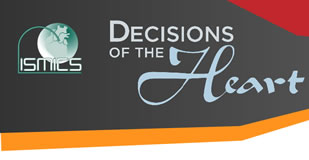About Coronary Artery Disease
Coronary artery disease (CAD) is the most common form of heart disease and is the leading cause of death in the United States, affecting an estimated 17.6 million people.1 CAD is a serious condition in which the heart becomes increasingly deprived of its supply of oxygen-rich blood. Oxygen deprivation in the heart muscle is called cardiac ischemia.2 Depending on the severity of your CAD and ischemia, your doctor may recommend treatment with medicine, percutaneous coronary intervention (PCI) or coronary artery bypass graft (CABG) surgery. Reversing ischemia is the primary goal of treatment for CAD.3 4
Lifelines to the Heart: The Coronary Arteries
 The heart is a high-performance muscle with a big demand for oxygen. The average heart beats 100,000 times a day, pumping the equivalent of 2,000 gallons of blood.5 The two major arteries that fuel the heart muscle with oxygen-rich blood are the left main coronary artery and the right coronary artery.6
The heart is a high-performance muscle with a big demand for oxygen. The average heart beats 100,000 times a day, pumping the equivalent of 2,000 gallons of blood.5 The two major arteries that fuel the heart muscle with oxygen-rich blood are the left main coronary artery and the right coronary artery.6
- The left main coronary artery branches into the left anterior descending artery (LAD) and the circumflex artery. They power the left ventricle, the heart's main pumping chamber.
- The right coronary artery branches into the right marginal artery and the posterior descending artery. They power the right ventricle, which pumps blood to the lungs, and feed the muscle at the bottom of the left and right ventricles.
The severity of your CAD depends on which coronary arteries are diseased and the percentage of narrowing in each one. Treatment decisions should be based on which coronary arteries are affected.7
Causes of CAD
Restricted blood flow to the heart is caused by the growth of plaques in the coronary arteries. Plaque consists of fat, cholesterol, calcium, and other substances found in the blood.8
- High fat diets, sedentary lifestyles and smoking tobacco are major contributors to CAD.9
- Inflammation of the inner artery lining is also a pivotal cause in the growth of plaques.10
Symptoms
The two major symptoms of CAD are chest pain (angina) and shortness of breath.11 However, many people experience no chest pain but tire more easily or feel fatigued.12
- Angina is chest pain or term0611mfort that occurs when the heart's demand for oxygen-rich blood is greater than plaque-filled arteries can supply.13
- Shortness of breath and fatigue occur because the heart muscle is less efficient due to ischemia.14
If you have symptoms of CAD, your doctor may run tests to determine which area of the heart is ischemic. The region of ischemia corresponds to the presence of plaque in specific coronary arteries.15 For example, if the muscle at top and center of the left ventricle is ischemic, the LAD coronary artery probably has a blockage.16 17To confirm the extent of blockages and which arteries are involved, an angiogram in which dye is injected into the arteries may be recommended.



